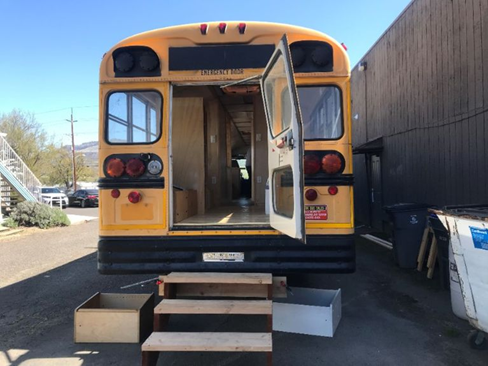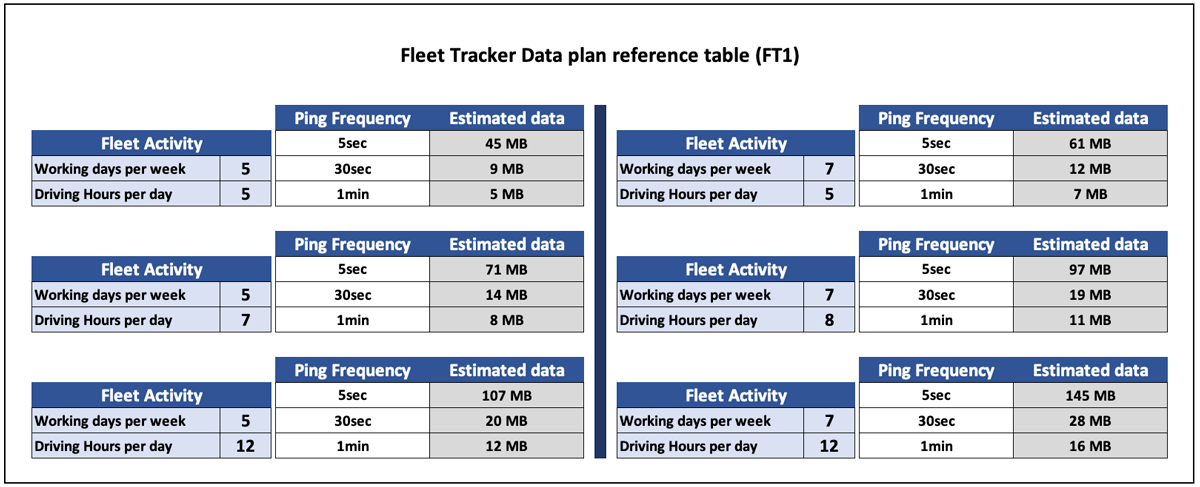How to Repurpose School Bus Fleets for Emergency Relief
At the core of any emergency relief effort is a continuous vision to improve strategy and the technology that drives it. This includes exploring how available resources can be repurposed to address immediate needs.
Telematics are helping fleets transform civilian resources into powerful vehicles for first response and emergency relief. We will explore how school bus fleets—everyday assets—can function as effective emergency relief vehicles.
The Need to Repurpose Resources in Critical Times
When COVID-19 arrived last year, first responder fleets had to respond to the call and reallocate resources accordingly. As a result, fleets were stretched thin as many EMS, police, and fire first responder teams were running at full capacity. With teams operating at this level, fleet managers had to look for alternate ways of securing assets to help them respond to critical situations.
By April 2020, schools supporting 90% of the world’s student population had closed their doors, leaving vehicles idle and their drivers without a job. School bus fleets—previously averaging $2 million a year in revenue—were losing business as more schools adopted remote learning. This resulted in widespread layoffs, with the Amalgamated Transit Unit estimating that 65% of school bus drivers were furloughed by August 2020. Moreover, fear was rampant that once the demand for school buses returned, there wouldn’t be enough drivers left to meet the demand.
Drivers weren’t the only ones taking a hit. In New York City, for example, the DOE is responsible for paying 85% of daily expenses for schools that are shut down due to emergencies. As a result, the DOE was found to be paying roughly $5.9 million a day for idle buses stored in parking lots as a result of COVID-19 related school closures.
Instead of letting these functional vehicles accumulate debt while drivers remain furloughed, telematics helped fleet managers find innovative ways to extend their fleet operations using school buses. We will explore how these largely underutilized assets are being repurposed to function in emergency support roles during the pandemic and beyond.
Using Telematics to Repurpose School Buses for Emergency Response
While school bus fleets were not initially intended for public safety and emergency response, their ability to support emergency efforts cannot be dismissed.
When South Bend schools closed in March 2020, the district deployed school buses around the neighborhood to provide dedicated Wi-Fi to students in low-income neighborhoods transitioning to at-home learning. In Jersey City, two school buses were outfitted with mobile hygiene stations—featuring restrooms, showers, and washers—for homeless women to freshen up. Meanwhile, students in Oregon transformed school buses into makeshift homes for individuals displaced by local wildfires in 2020.

All of these examples speak to the opportunity for school buses to significantly contribute to unforeseen emergency relief efforts. The size of the buses means they can be used to help larger numbers of civilians, while telematics transforms them into an extension of first response.
Here’s how telematics equip school buses for emergency response:
- GPS Fleet Tracking—With location tracking and geofencing, fleet managers can track bus movements and deploy them in times of crisis. When buses are transporting civilians, GPS tracking provides situational awareness for increased public safety.
- Crowd Management—Unlike traditional first responder vehicles, buses can be extremely useful in crowd control. When a crisis occurs, bus fleets can quickly remove bystanders from the scene and safely transport them to another location. Fleet managers can rest assured knowing their bus fleets are supported with standardized post-trip checks, audit reporting, and Child Check-Mate.
- Enhanced Communication—Aided by interoperable communication, fleet managers can have complete visibility over transport. Enhanced push-to-talk connects bus drivers to your larger fleet operations for easy deployment, or to quickly notify managers of an emergency on-board the bus.
- Guaranteed Safety—Telematics provide proof of completed safety and compliance checks so fleet managers can ensure their buses are operating according to the necessary safety standards.
How Telematics Transform School Transportation
Equipping bus fleets with telematics not only benefits first responders—it can also strengthen response for school-related emergencies. To reap the benefits of bus telematics, schools should make sure transportation is a part of their overall school safety plans. Fleet Complete is helping schools and first responders expand the use of telematics on their bus fleets to equip them for everyday emergencies, as well as routine maintenance and oversight.
In the words of a transportation supervisor leveraging bus telematics, “If there’s an emergency on the bus or a vehicle breaks down, [fleet managers] can pull up the integrated dispatch tool and the GPS data on a smartphone. They don’t have to call drivers to ask them exactly where they are, which is especially valuable if there’s a substitute driver who is unfamiliar with the route. [Fleet managers] know where the bus is located and can even see where the closest mechanic is so that they can get to the bus and those students quickly.”
“If extreme weather, accidents, or other road conditions create transportation issues, the [fleet manager] can use FirstNet’s integrated dispatch and communications subgroups to notify drivers in zones that have been impacted. They can also look back at bus routes from the previous day and see where the district can eliminate redundancies.”
Emergency response requires a coordinated effort from every available asset. Repurposing school buses helps ensure increased safety at our schools and can provide powerful support to emergency response.
To learn more about how to transform school bus fleets for first response through telematics, request a Fleet Complete for FirstNet demo today.
If you found this material helpful, please share it on social media.
RECENT NEWS
Why it is Crucial to Track Emergency Response Assets During a Disaster
Find out how effective tracking of emergency response assets helps command centers manage the challenges of natural and man-made disasters.
Why It’s Important to Involve First Responders in School Bus Training
School bus-related emergency response is most effective when you involve first responders in school bus training. Here’s why.
How Asset Tracking Impacts First Responders
Lack of oversight of mission-critical assets could prevent first responders from fulfilling their duty. Find out how fleets are using asset tracking management systems to reduce the impact of mismanaged assets and better prepare their teams for emergencies.
How Technology Improves First Responder Efficiency During Disaster Recovery
Learn how modern network technology improves first responder efficiency in times of emergency caused by natural and man-made disasters.
How School Bus Driver Training Improves Emergency Response and Saves Lives
Learn how effective school bus driver training helps schools maintain safety, improve emergency response, and reduce injuries and fatalities.
© 2020 | All Rights Reserved | FleetComplete & FirstNet




